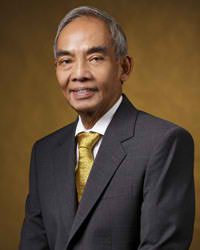SUMMARY
This is AI generated summarization, which may have errors. For context, always refer to the full article.

What is meant by “unconstitutional?” The prefix “un” means contrary to; thus, the term “unconstitutional” means contrary to or violative of the Constitution. (Read:DAP: What did the Supreme Court really say? Part 1)
The specific Disbursement Acceleration Program (DAP) acts and practices that were ruled “UNCONSTITUTIONAL” are:
- the withdrawal of unobligated allotments from the implementing agencies, and the declaration of the withdrawn unobligated allotments and unreleased appropriations as savings prior to the end of the fiscal year AND (all caps mine) without complying with the statutory definition of savings contained in the General Appropriations Acts (GAA);
- the cross-border transfers of the savings of the Executive to augment the appropriations of other offices outside the Executive; and
- the funding of projects, activities, and programs that were not covered by any appropriation in the GAA
Which provisions of the 1987 Constitution – the longest Constitution our country ever had – were considered by the Supreme Court to have been contravened by these acts and practices?
Constitutional violation
The DAP was said to have violated two provisions (or sections) in the Constitution’s text and one doctrine, i.e. a principle of democratic government that is considered to be embedded in and suffuse the provisions of the text.
The specific provisions were Section 29(1) of Article VI that says “no money shall be paid out of the Treasury except in pursuance of an appropriation made by law” and Section 25(5) of the same article that says “no law shall be passed authorizing any transfer of appropriations; however, the President, the President of the Senate, the Speaker of the House of Representatives, the Chief Justice of the Supreme Court, and the heads of Constitutional Commissions may, by law, be authorized to augment any item in the general appropriations law for their respective offices from savings in other items of their respective appropriations.”
The principle (as distinguished from the textual provision) that the Supreme Court considered violated by the DAP was the Constitutional Law doctrine of separation of powers. Unfortunately, for us who have been molded to demand computer accuracy from everything and everyone, there is no concise and precise statement in the Constitution of what the doctrine of separation of powers allows and what it disallows.
Thus, we have to rely in the sermons and homilies of the priests and shamans of Constitutional Law to understand the doctrine; and since, to date, the clerics of the Constitutional Law hierarchy are still arguing among themselves on various aspects of separation of powers (and the other side of the coin, checks and balances), even after the more sensible sectors of the intelligentsia have long ceased their fighting on the question of how many angels could stand on the head of a pin, I beg to refrain from that area of Constitutional Law where holy angels fear to tread.
Unconstitutional vs. void
In addition to the 3 acts that were declared UNCONSTITUTIONAL, one act was declared as “VOID.”
According to the Dictionary of Federico Moreno, citing Go Chioco v. Martinez, 45 Phil 285, void means “of no effect whatsoever; absolutely and entirely null; of no legal force and which for that reason cannot be enforced.”
Declared VOID was “the use of unprogrammed funds despite the absence of a certification by the National Treasurer that the revenue collections exceeded the revenue targets for non-compliance with the conditions provided in the relevant GAA.”
It is not clear to many what differentiates UNCONSTITUTIONAL from VOID.
But it is obvious to all that the Supreme Court did not declare any of the acts which were ruled as either UNCONSTITUTIONAL or VOID to be, at this stage of the national inquiry, to be criminal.
The criminal culpability of those who committed those acts, according to the Supreme Court, needs to be further looked into in the future “by the proper tribunals determining their criminal, civil, administrative, and other liabilities.”
‘The doctrine of operative fact’
It is also obvious to all that, despite the ruling of unconstitutionality, the Supreme Court did not rule that everything, as in everything, should be moved back to square one. Instead, it declared, as it did in the earlier PDAF (Priority Development Assistance Fund) case, the applicability of the doctrine of operative fact on the impact of its July 1 ruling on the DAP.
“The doctrine of operative fact” says the Supreme Court “recognizes the existence of the law or executive act prior to the determination of its unconstitutionality as an operative fact that produced consequences that cannot always be erased, ignored or disregarded. In short, it nullifies the void law or executive act but sustains its effects. It provides an exception to the general rule that a void or unconstitutional law produces no effect ….”
Only the deaf could not hear the unequivocable declaration of the Supreme Court: “We find the doctrine of operative fact applicable to the adoption and implementation of the DAP. Its application to the DAP proceeds from equity and fair play. The consequences resulting from the DAP and its related issuances could not be ignored or could no longer be undone.”
Just precisely what “consequences” that resulted from the DAP (prior to the declaration of partial unconstitutionality by the Supreme Court) are, and which of these consequences are covered by the doctrine of operative fact and therefore cannot be ignored or undone, remain to be spelled out and litigated in the future.
What is clear, though is that those who are involved, as authors and executors, have ants in their pants. – Rappler.com
Reynaldo “Gerry” Geronimo is a partner at the Romulo, Mabanta, Buenaventura Sayoc & De los Angeles law office. He is known as The Trust Guru and maintains a website, www.thetrustguru.com.
Add a comment
How does this make you feel?
There are no comments yet. Add your comment to start the conversation.